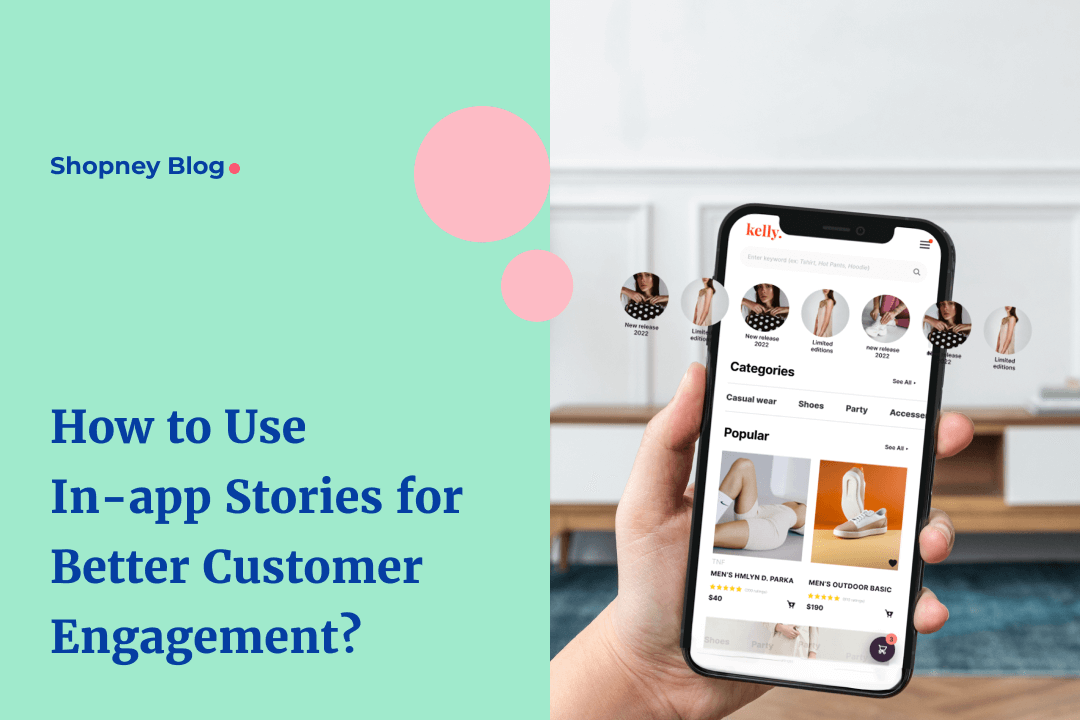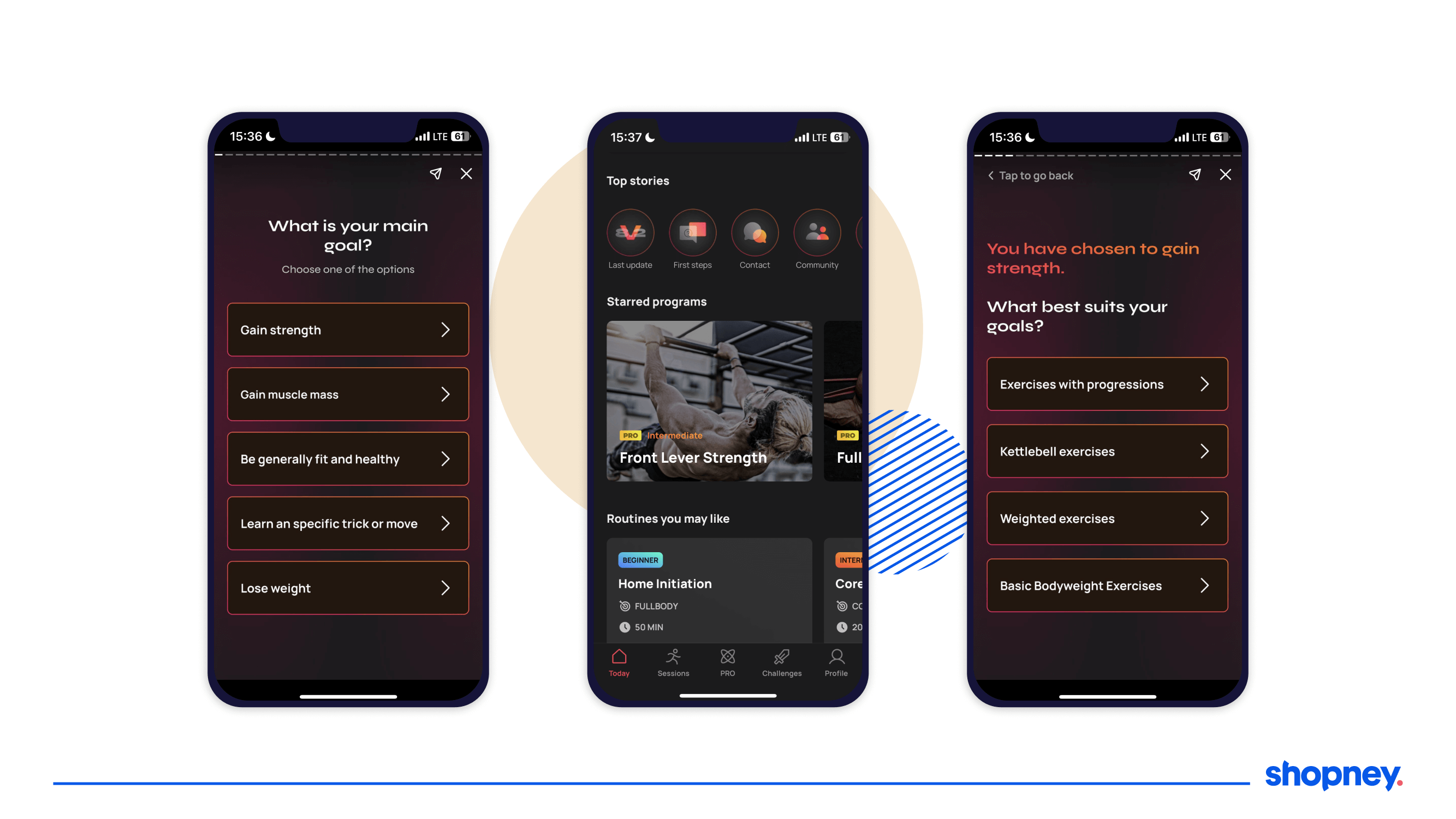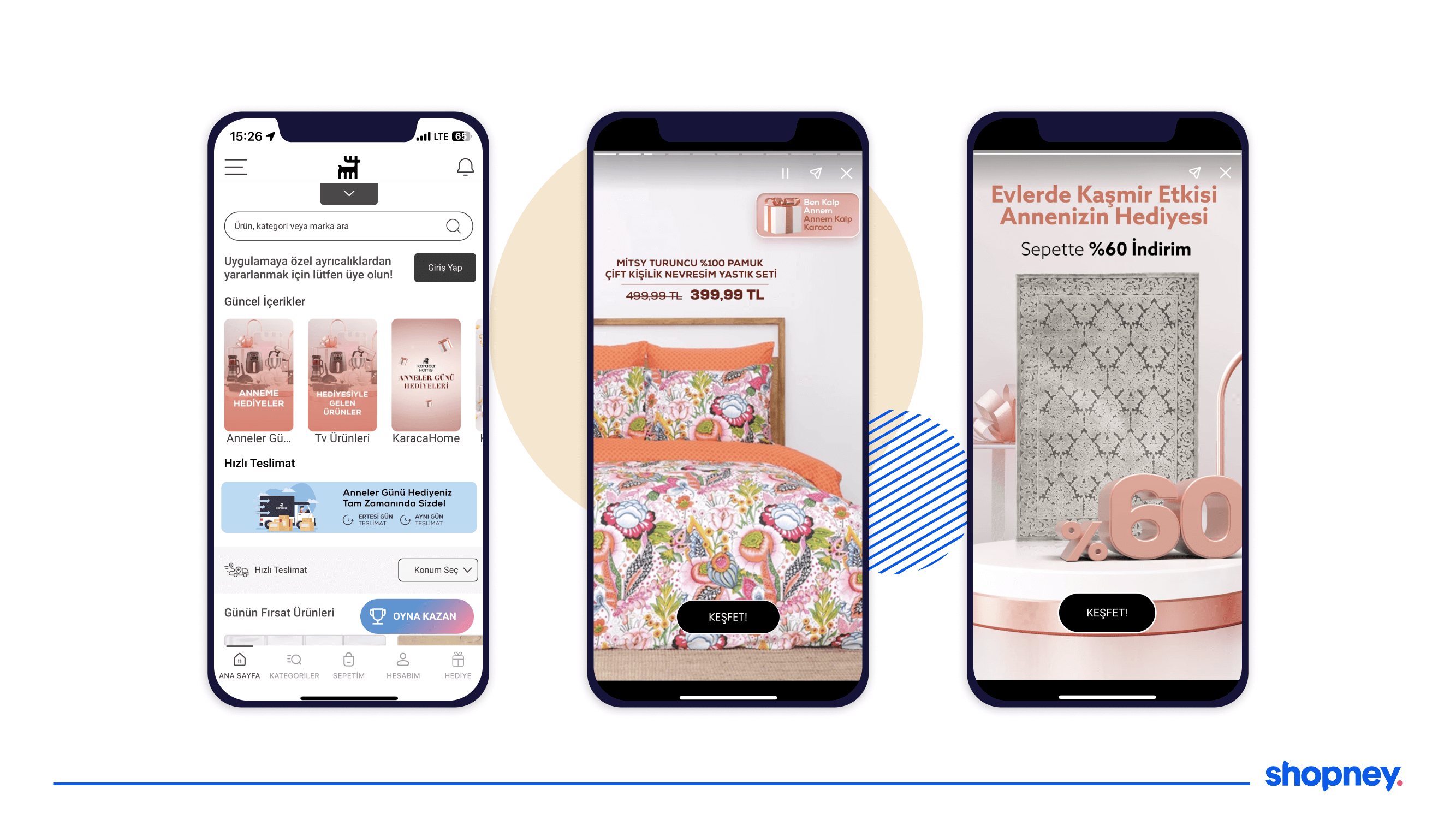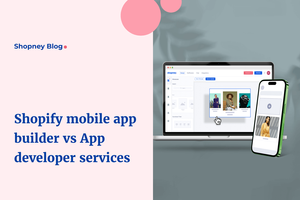
One of the key issues that content creators, app developers, and marketing managers have to overcome is how to keep their customers engaged. Regardless of what industry you focus on, it is always difficult to find the right way to capture customers' attention and keep it glued to your brand.
Professionals use numerous tools to tackle this difficult task, and one of the more underused tools is the in-app stories. So, let's take a look at different ways in which you can use in-app stories for better customer engagement and give you essential tips on how to create engaging in-app stories.
Different ways to use in-app stories for better customer engagement
A well-designed, well-placed in-app story can be a powerful tool in customer engagement. Through it, you can effectively guide the customer's attention and ensure that they interact with your app.
Now, an in-app story can be anything from a combination of written and visual content to full-fledged integration of interactive elements and high-end animation. Therefore, there seem to be countless ways in which you can use in-app stories to boost your app. While this is technically true, there are certain areas where in-app stories seem to shine the best.
Using in-app stories as guides
In-app stories are supposed to be bite-sized pieces of content that hold a lot of informative value. You can easily convey a ton of information through a well-crafted in-app story, especially if you time it well in the in-app journey. This combination of information density and easy digestion makes them ideal for guides.

If you need to explain something to your customers, you can easily use an in-app story. A well-placed bit of information can help guide them through your app and ensure that they enjoy using it. This makes in-app stories an invaluable tool for app onboarding. Especially if the app creator integrates them from the get-go. In-app story content can guide people through the app and ensure that no part of it goes unnoticed.
Seamless transition between different platforms
In order to run a decent app it is necessary to connect it to different platforms. Not only should it connect to your website, but it should also connect to other social media platforms and even other apps. By integrating your app you can increase your app's exposure and reach a wider audience.
You will also provide users with a more seamless and integrated experience, making it easier for them to engage with your app and its features. Through long-term marketing, you can look to cross-promote your app and other products or services, which can help increase revenue and brand awareness.
Integrating your app with online platforms will also provide valuable data on user behavior, preferences, and demographics, which can be used to improve your app's performance and tailor your marketing efforts.
Well, one of the best ways to integrate your app with other platforms is through in-app stories. You can use it to bridge the gap between your app and other platforms where a person can continue their online journey with a simple click or a swipe. Furthermore, keep in mind that in-app stories can be dynamic. Therefore, based on the customer's previous behavior, you can look to recommend different platforms to check out.

Once you get a hang of it, you will easily connect your app with other platforms, and even other apps.
Easy personalization
Personalization is the crux of modern marketing. Regardless of what industry you work in, on how you plan on marketing your brand, you will have to incorporate personalization in your marketing content.
For certain types of content, personalization is fairly difficult due to design complexity and tool limitation. But, seeing that StorifyMe makes creating in-app stories easier than ever, you hardly have a reason not to incorporate personalization.
Through in-app stories, you can address your customers on a personal level. This, of course, entails that you know a thing or two about your customers and what their preferences are. Here again, we see the value of cross-platform integration as it enables you to gather this information with relative ease.
Once you know how to address your customers, you can set up your in-app stories to provide personalized data. Do it well, and customers will feel that the app is somehow addressing their specific needs and preferences in real-time. This, as you can imagine, will do wonders for your engagement rates.
Consistent branding
Having a strong brand identity goes a long way in keeping your customers loyal to your brand and having them engage with your content. As such, it is important to work on your branding, especially when designing the in-app experience. Again we see a task where in-app stories can be of great help.
After all, they provide a visual and interactive way to showcase your brand identity and values to users. Through them, you can look to outline your brand values and messaging in an engaging and interactive way. Doing so will help customers to better understand and connect with your brand and reinforce your brand's identity.
In turn, this will increase brand recognition and ensure that your brand is memorable. And high-brand recognition tends to lead to higher customer loyalty and better engagement rates.
A seasoned professional will help you not only use in-app stories for better customer engagement but also keep your branding consistent while you do so.
Making engaging in-app stories
In order to use in-app stories for better customer engagement, it is not enough to simply add in-app stories. They, in their own right, need to be engaging so that they will motivate customers to further explore your app and hopefully interact with it.
The process of creating an engaging in-app story necessitates that you both have a good understanding of the in-app experience and that you know what role an in-app story is supposed to have in it. If you plan on hosting a store within your app, you also need to understand the difference between UX and shopper experience.
To acquire this understanding you need to delve further into in-app story design and how it relates to apps in general. For now, we will give you basic tips on how to create engaging in-app stories and how to approach testing them.
Try to be creative
Platforms like StorifyMe provide you with dozens of different tools to create the in-app stories of your dreams. Therefore, you can understand when we are a bit underwhelmed to see our clients focus mainly on a combination of written content + a bit of visual flair. If you wish your in-app stories (and web stories) to be engaging you need to be creative.
In-app stories are a visual medium, so use them to showcase your brand's creativity. You can use animated graphics, video clips, and even AR filters to create engaging content. You can also use stories to tell a story that resonates with your customers, such as the journey of how your product was made or how your service has helped people in their everyday lives.
Once you create your story in StorifyMe, you can easily add it to your Shopney app. This is made possible by pre-made integration.
Don't shy away from using modern tools for designing story content
Short and sweet
Story content in general is meant to be consumed quickly and easily. While it is possible to create long-winded in-app stories, we would advise that you refrain from doing so unless you have a really good idea of what you are doing. In general, it is best that you keep your content short and to the point. You can use this format to share a quick tip or a fun fact that relates to your brand. If you have more to say, you can always create a series of stories.
Add interactive features
One of the benefits of in-app stories is the ability to include interactive features such as polls, quizzes, and questions. These features can be used to engage your audience and gather feedback. For example, you can ask your customers to vote on their favorite product or service, or you can ask them to share their experience using your product.
Another option is to offer an in-app chat as an easy way to communicate with your customers. You can also guide them to other platforms in order to further develop their interest. Or you can guide them to a different section of your app that is better suited to their current interest.
Personalization
As we previously stated, personalization is the crux of modern marketing. Therefore, when you start creating in-app stories, you should keep personalization in mind. At best, this will entail dynamically changing your in-app stories based on the customer profile.
But, if this seems too complicated, you can still look to introduce personalization in a simpler way. For example, you can show content based on the customer's location, purchase history, or interests.
You can also look to change the content story based on the customer's age, gender, or education. This will make your content far more relevant and engaging for the customer.
Stay consistent with your branding
From a design standpoint, it is understandable if you find yourself struggling with in-app stories. On the one hand, you want them to be consistent with your brand so that introducing them seems natural.
On the other hand, you want them to stand out so that people will actually pay attention to them. Well, while this will require some practice, we suggest that you start by being consistent with your brand. After all, consistency is key when it comes to branding.

By using your brand colors, fonts, and logos in your in-app stories, you can create a cohesive look and feel that reinforces your brand's identity. If necessary, consult with an experienced visual designer in order to outline the key aspects of your brand's identity. This can help increase brand recognition and build trust with your customers.
Once you get a hang of it, you can look to make some minute changes in order to make your in-app stories stand out. But, even in this case, we would advise that you rely on the quality of information that your in-app stories provide, and less on their ability to attract attention as a visual medium.
Exclusive in-app content
A great way to use in-app stories is to offer exclusive content or promotions to your customers. This can help create a sense of exclusivity and increase engagement. For example, you can offer a discount code or a free sample to customers who view your in-app stories. You can also combine in-app stories with a more layered customer loyalty program, and help them attract new customers.
Have a point
The final tip we have is to not use in-app stories haphazardly. While they are a potent tool, you cannot simply plaster your app with story content and hope that it will improve customer engagement. In order to properly use in-app stories for better customer engagement, they need to have a clear point.
An in-app story isn't fluff content to simply fill the space within your app. It is a valuable tool that is supposed to either inform the customer about your app or guide their attention to something else. The more you look into in-app stories, the more you will understand that their timing is as important as their quality.
Final Thoughts
By now you should have a fairly good idea of how to use in-app stories for better customer engagement. As always, we suggest that you first start by creating story content and seeing what type suits your app best. If necessary, find a more experienced visual designer to consult on design choices so that your stories are consistent with your brand.
You can even look to utilize AI to help you create visual elements necessary for in-app stories. With a couple of templates, you can start experimenting with in-app content and see how it can guide the customer's attention. With some A/B testing, you will soon discover which in-app stories capture the customer.
With Shopney <> StorifyMe integration, you can start leveraging in-app stories in your mobile app today!




